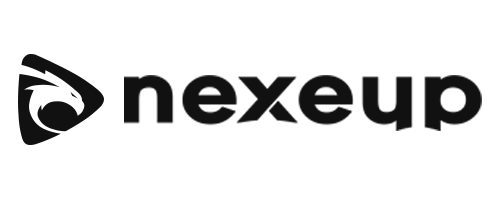Summary
- Networking is about forming genuine relationships that help you grow, learn, and open new opportunities.
- Consistency and authenticity in networking create trust, making your network eager to help when needed.
Building a strong professional network isn’t about collecting business cards or adding connections on LinkedIn—it’s about forming genuine relationships that help you grow, learn, and open doors you didn’t even know existed. Over the years, I’ve stumbled, fumbled, and finally found eight strategies that really kick-started my networking efforts and propelled my career forward. None of these are magic bullets, but they’re practical, human-centered approaches that you can start using today.
1. Start with a Mindset of Give, Not Take
When I first dipped my toes into networking, I approached every coffee chat hoping to snag a juicy job tip or a referral. Unsurprisingly, people felt my desperation from a mile away, and those conversations fizzled out. The shift happened when I flipped the script: instead of asking “What can you do for me?”, I asked “How can I support you?”
- Offer insights or resources. If someone mentions they’re learning a new software tool, share a tutorial you found helpful or recommend a community.
- Celebrate their wins. A thoughtful note congratulating a colleague on a promotion or project success can leave a lasting impression.
- Make connections freely. Introducing two people who can mutually benefit costs you nothing and cements you as a connector.
The beauty of a giving mindset is that it comes full circle: when you genuinely help others, they’re naturally inclined to return the favor.
2. Treat Every Interaction as Human-to-Human
I remember attending an industry conference where everyone seemed glued to their phones—if you actually said “hi” to someone, their eyes would light up. Networking is fundamentally human, and treating each person as more than a stepping-stone transforms the experience.
- Use names. It’s simple: “Great to meet you, Priya,” leaves a warmer feeling than “Hi.”
- Find common ground. Whether it’s a shared alma mater, a love of spicy food, or a favorite Netflix series, genuine connections often start with something you both care about.
- Listen actively. Instead of mentally scripting your next question, really hear what they’re saying. Reflect back: “It sounds like you’ve been deeply involved in that project—what surprised you the most?”
By treating people as people, not potential resources, you build trust and make yourself memorable.
3. Leverage Informational Interviews
An informational interview is just a chat where you learn about someone’s career path, challenges, and advice—no hidden agenda attached. Early in my career, I scheduled a 20-minute call with a senior marketer at a company I admired. I came prepared with thoughtful questions (“What’s a typical day like?” “How did you land your first leadership role?”) and left with insights that saved me months of trial and error.
- Be respectful of time. Stick to the agreed duration. If the conversation naturally spills over, great—but don’t overstay your welcome.
- Prepare two or three focused questions. Don’t waste your contact’s time with vague “tell me about your work” prompts.
- Follow up with gratitude. Send a brief thank-you note highlighting one specific piece of advice you appreciated. A handwritten card can be especially memorable.
Informational interviews are low-pressure, high-value exchanges that can expand your network one genuine conversation at a time.
4. Show Up Consistently
Networking isn’t a one-off event; it’s a practice. I used to attend a monthly meetup now and then, but I didn’t feel like I belonged until I showed up regularly. Eventually, organizers recognized my face, I made friends, and I was even invited to speak.
- Attend recurring events. Whether it’s a local chamber of commerce breakfast, a weekly coworking session, or an online webinar series, pick a few gatherings you enjoy and commit to them.
- Volunteer for small roles. Can you help with event setup, moderation, or note-taking? You’ll meet organizers and fellow volunteers in a more relaxed context.
- Engage online. On platforms like Slack communities or LinkedIn groups, comment on posts, share resources, and answer questions. You’ll become a familiar, trusted voice.
Consistency breeds credibility. Over time, people see you as a reliable participant, not just a name on a badge.
5. Craft a Memorable “Elevator Story”
You’ve heard of elevator pitches—those 30-second summaries of what you do. But they can sound scripted and robotic if you’re not careful. Instead, think of an elevator story: a brief anecdote that illustrates who you are, what you bring to the table, and why you’re passionate about it.
- Include a hook. Maybe you started designing websites because you hacked together your college roommate’s blog, or you fell in love with finance when you managed your parents’ small business books as a teenager.
- Show, don’t tell. Instead of “I’m a problem-solver,” try “Last quarter, I automated our reporting process, freeing the team from eight hours of manual work every week.”
- Invite interaction. End with an opening: “That’s how I found my way into UX research—how about you? What drew you to your field?”
People remember stories much more than bullet points. A good elevator story can spark deeper conversations long after the initial introduction.
6. Utilize Social Media with Intention
Social networks are both blessing and curse: they can connect you to thousands, but only a handful will actually engage if you don’t use them well. When I shifted from passive scrolling to purposeful sharing, I saw my network blossom.
- Post your learnings. After mastering a new skill—say, building an API or giving a tough presentation—share the three key takeaways. Others appreciate distilled insights.
- Tag and acknowledge. If you reference a tool or method you learned from someone, tag them. A quick “thanks to @JaneDoe for introducing me to this framework!” goes a long way.
- Join and contribute to niche groups. Facebook groups, LinkedIn subgroups, or Slack channels dedicated to your specialty can be rich grounds for connection. Don’t just lurk—answer questions, share articles, and offer feedback.
Intentional social media use turns digital connections into real-world opportunities.
7. Build a “Networking Routine” into Your Calendar
Let’s face it: if networking isn’t scheduled, it often doesn’t happen. I now block out one hour every week dedicated solely to networking activities—whether that’s reaching out to three new contacts, following up with someone I met last month, or drafting an email to see how a former colleague is doing.
- Set concrete goals. Instead of “network more,” aim for “schedule two coffee chats this month” or “comment on three LinkedIn posts per week.”
- Use reminders. Calendar alerts, habit-tracking apps, or even a sticky note on your monitor can remind you to keep the momentum going.
- Track your progress. A simple spreadsheet with columns for “Contact Name,” “Date Reached Out,” “Method,” and “Next Follow-Up” helps you stay organized and accountable.
Turning networking into a routine ensures it doesn’t fall by the wayside when work gets busy.
8. Nurture Long-Term Relationships
It’s easy to connect once and never look back. The real magic happens when you nurture relationships over months and years. I keep a list of key people—mentors, peers, even industry journalists—and I check in every few months with a note or shared article. You don’t need to flood their inbox; a brief, thoughtful message goes a long way.
- Remember personal details. If you know someone’s dog just had puppies or they’re training for a marathon, ask about it next time you chat.
- Offer timely value. Spot a conference they might like? Send them the link. See a job opening in their field? Forward it with a quick note.
- Celebrate milestones. Birthdays, work anniversaries, or project launches are all opportunities to reconnect and show you care.
Over time, these small gestures cultivate trust and goodwill, so when you do need advice or assistance, your network is eager to help.
Putting It All Together
Networking might start with that initial handshake or LinkedIn request, but it’s sustained by the authenticity, consistency, and generosity you bring to each interaction. Remember:
- Give first. Approach networking as an opportunity to help.
- Be human. Treat every person as a unique individual, not a resource.
- Learn through conversations. Use informational interviews to deepen your understanding.
- Show up. Regular attendance and volunteering foster belonging.
- Tell stories. Craft an elevator story that sticks.
- Engage online. Share insights and contribute to communities.
- Make it a habit. Schedule time for networking every week.
- Nurture relationships. Check in, offer value, and celebrate wins.
By weaving these eight strategies into your career development plan, you’ll build a network that not only supports your goals but also enriches your professional journey. Remember, the heart of networking is relationships—invest in them, and you’ll be amazed at how far they can carry you.








These strategies offer a refreshing approach to networking, emphasizing genuine relationships and mutual support. By focusing on giving, being human, and consistently engaging, you’re setting the foundation for a network that’s both meaningful and beneficial. Keep up the positive mindset, and your career will surely flourish!